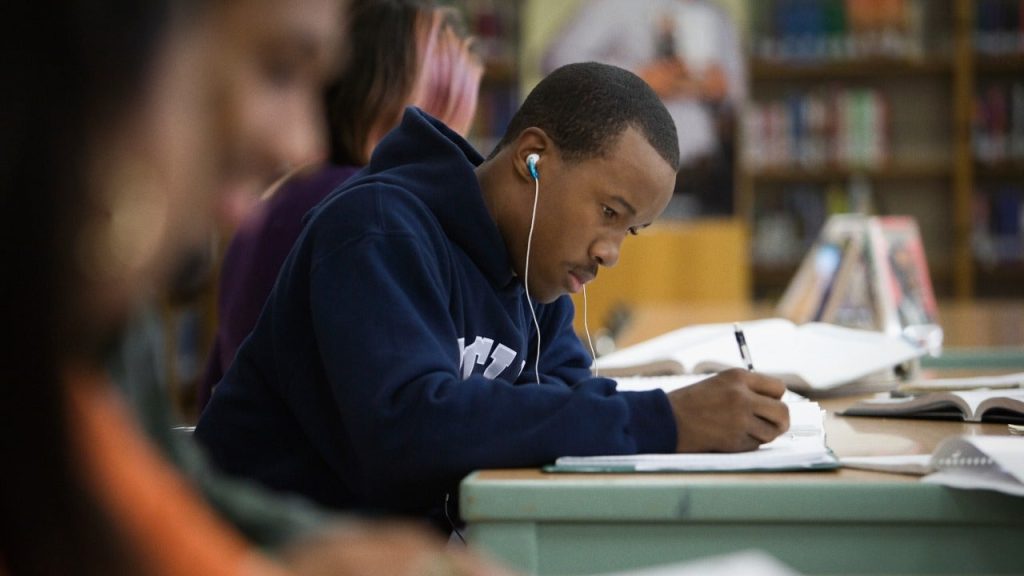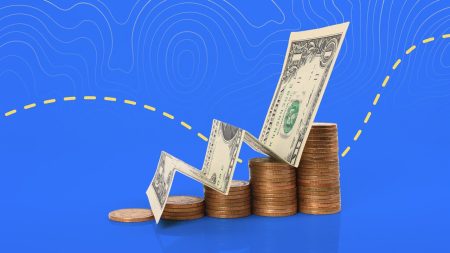Hill Street Studios/Getty Images
Key takeaways
- Undergraduate students received an average of $16,360 in financial aid.
- Broken down by aid type, $3,900 of financial aid came as federal loans and $11,610 as grants.
- It is estimated that around 43 percent of the class of 2024 completed a FAFSA application.
The cost of higher education has never been higher, and neither has the need for financial aid. The Free Application for Federal Student Aid (FAFSA) remains the primary way students can access federal and state funding to help cover tuition, fees and living expenses.
But how much aid do students actually receive? Here’s a closer look at the latest FAFSA statistics and the average financial aid package for students in 2025.
Note: ‘Federal aid’ encompasses multiple forms of federal financial assistance, including loans and grants. Loans must be repaid and grants generally do not.
Financial aid statistics
- Undergraduate students received $16,360 in financial aid on average in 2023-2024 — $3,900 of which came in federal loans and $11,610 in grants.
- In 2023-2024, undergraduate and graduate students collectively received a total of $256.7 billion in student aid in the form of grants, Federal Work-Study (FWS), federal loans and federal tax benefits. For reference, students borrowed just $13.3 billion from nonfederal sources such as private lenders.
- It is estimated that around 43 percent of the class of 2024 completed a FAFSA application.
- In 2022-2023, half of the bachelor’s degree recipients graduated with debt, with an average of $29,300 each.
- California had the highest number of FAFSA applications processed for the 2025-2026 academic year with 1,405,890. Texas came in second with 967,790.
Sources: CollegeBoard, StudentAid.gov
Types of federal financial aid
Federal financial aid comes in several forms to help cover tuition, fees, housing and other college expenses:
- Grants: Need-based aid that doesn’t need to be repaid, such as the Pell Grant.
- Federal Work-Study (FWS): Part-time jobs for eligible students to earn money for school expenses. Students who qualify typically work an on-campus job.
- Federal student loans: Borrowed funds that require repayment with interest — including subsidized, unsubsidized and PLUS loans.
What percentage of students receive financial aid?
According to the National Center for Education Statistics, over 87 percent of students received some form of financial aid for the 2021-2022 school year.
Federal loans and institutional grants make up over half of students’ total aid. See the table below to see the full breakdown:
Average aid for undergraduate students over the years
The average student financial aid package is primarily made up of grants and loans — something that has remained constant over the past twenty years.
| Academic year | Average grant aid | Average federal loans | Average other aid |
|---|---|---|---|
| 2003-2004 | $6,490 | $5,140 | $990 |
| 2013-2014 | $10,120 | $6,550 | $1,760 |
| 2023-2024 | $11,610 | $3,900 | $850 |
| Source: College Board |
Average institutional grant aid by institution type
- Private, nonprofit four-year colleges offer the most institutional grants with an average aid amount of $20,860.
- Public schools – both four-year and two-year – offer just a fraction of that amount. It is important to note that they are typically much cheaper in terms of tuition.
Average institutional grant aid by sector, 2021-2022
Note: This is for first-time, full-time undergraduate students
| Institution type | Average aid amount | Percentage of students |
|---|---|---|
| Private, nonprofit, four-year | $20,860 | 83% |
| Public, four-year | $4,170 | 62% |
| Public, two-year | $520 | 22% |
| Source: College Board |
FAFSA filing statistics
All U.S. citizens and eligible noncitizens can fill out the FAFSA. Aid is not limited to graduating high school students and undergraduates. Instead, students from all walks of life, pursuing many types of degrees, may qualify for aid, including DACA students.
The 2021 FAFSA Simplification Act aimed to streamline the federal aid application process by reducing the number of questions and expanding eligibility, particularly for marginalized groups.
As a result, the following changes have occurred:
- More people without housing and foster youth applicants are completing the FAFSA.
- The significant reduction and simplification of questions have removed previous challenges to completing the FAFSA. This included complications with reporting income exclusions (which would be considered in the financial need analysis).
- Despite improvements, FAFSA completion rates among higher school seniors declined in 2024 due to technical delays with the new system rollout.
FAFSA filing statistics by demographic
According to data from Federal Student Aid, of the 17,928,282 who filed a FAFSA for the 2023-2024 application cycle:
- 47 percent were first-generation college students.
- 46 percent were between the ages of 19 through 24, meaning around half are younger than 18 years old or greater than 25 years old.
- 99 percent filled out a FAFSA online, as opposed to paper or a financial aid administrator.
- 28 percent were first-time college enrollees.
- 11 percent were pursuing a graduate or professional degree.
Frequently asked questions
Why we ask for feedback
Your feedback helps us improve our content and services. It takes less than a minute to
complete.
Your responses are anonymous and will only be used for improving our website.
Help us improve our content
Read the full article here









